On average, homeowners typically pay between $315 to $700 for professional tree trimming, with most paying $475. Some homeowners can expect to pay as low as $85 for a small tree trimming job, while others may pay closer to $1,267 for trimming a large tree over 60 feet tall.
Many factors will affect your total cost, including how many trees need trimming, the tree’s health, and where the tree is located. If you need a tree or stump removed as well, that’s going to cost extra.
Whether a large tree needs trimming or you want additional tree services, our pricing guide makes estimating your total cost easy.
Average Tree Trimming Costs in 2025
| National Average Cost | $475 |
| Typical Price Range | $315 – $700 |
| Extreme Low-End Cost | $85 |
| Extreme High-End Cost | $1,267 |
How much does it cost to trim a tree? Tree trimming prices average at around $475. However, the cost to trim large trees can get as high as $1,267, while smaller, bush-like trees can cost as little as $85.
Remember that these numbers are only national averages and that your total cost will vary depending on many facets.
Cost Estimator by Size of Tree
The most significant factor affecting the cost of tree trimming service is the tree’s size.
A tree trimming company will need to bring in heavy-duty equipment for large trees, which drives up costs. Trimming large trees also poses a greater safety risk than small trees. The riskier the job, the more expensive it will be.
What all of this means: Trimming tall trees requires more time, labor, equipment, and risk than pruning small trees. Hence, the cost of trimming a large tree will be on the higher end.
Tree sizes typically fall into three categories: small, medium, and large. Most tree care companies classify the size of the tree according to the heights listed below (though keep in mind that some tree care companies may go by different measurements):
The cost for tree trimming will be between $85 and $400 for small trees (less than 30 ft. tall) and between $158 and $758 for medium-sized trees (30-60 ft. tall). The average cost to trim a large tree (over 60 ft. tall) is between $233 and $1,267.
Other Factors that Affect Cost
Besides the size of your tree, other factors that affect the cost of tree trimming include:
- Location: Where the tree is located
- Accessibility: How easy it will be to get to the tree to trim it
- Number of trees: More trees to be trimmed
- Tree health: Some tree diseases make trimming them more dangerous.
- Pests: These can be a sign that your tree is rotting, which can make trimming riskier.
The more challenging and riskier the job, the higher the cost to trim trees will be.
Location
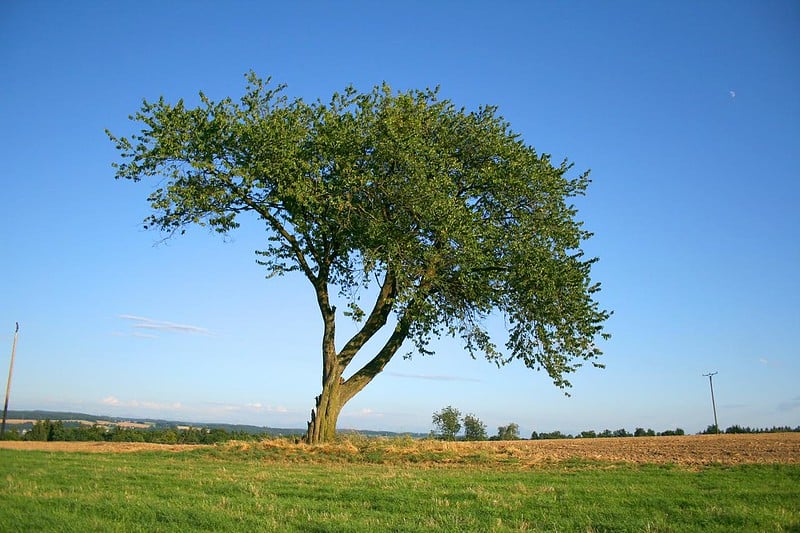
Is your tree located next to a power line or close to your home? A tree trimmer will need to take extra precautions to ensure no falling tree branches damage the power lines or other surrounding structures.
Since the tree trimming job will require more effort, equipment, and labor to do the job with care, your bill likely will be higher.
Pro Tip: If the tree needing trimming is near a power line, call your utility company. Many utility companies will trim a tree for free if it’s near a power line.
Accessibility
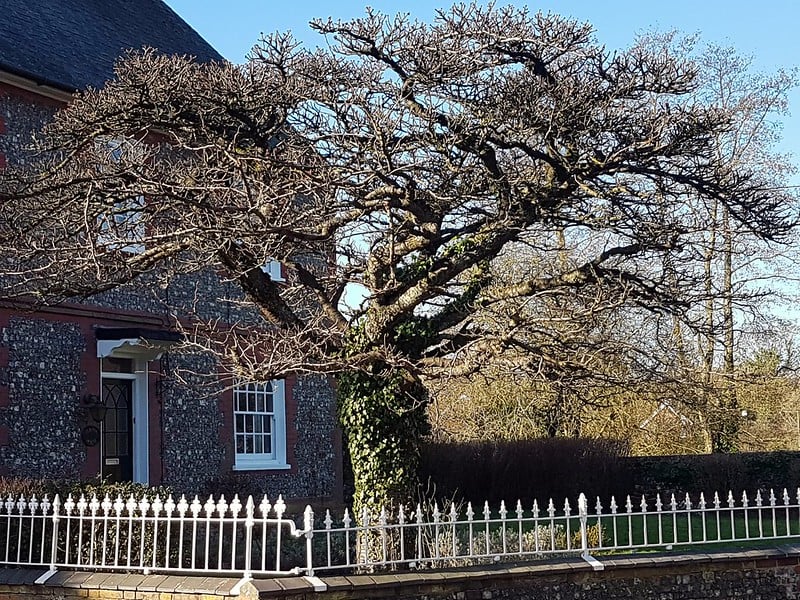
If your tree is in a hard-to-reach area, you will pay more for it to be trimmed.
Most professional tree trimmers use a bucket truck to reach a tree’s tallest point. If there isn’t enough surrounding space for the truck, they will need to access the tree’s top using a different means, such as climbing. The additional labor and risk will lead to a higher overall cost.
Number of Trees
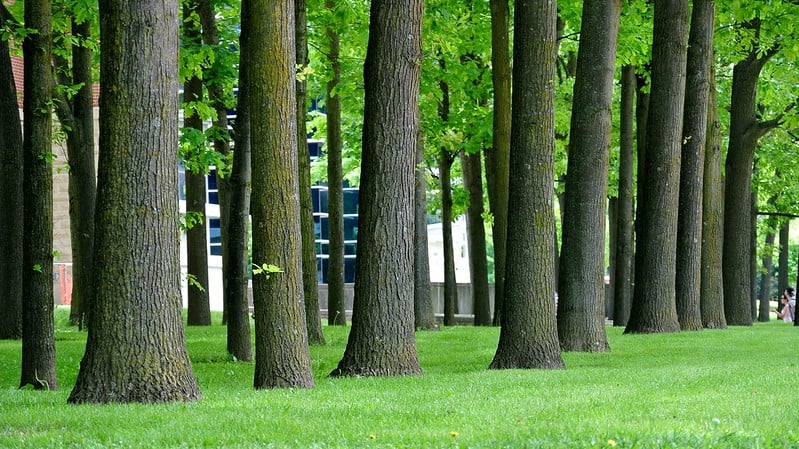
Most professionals will charge you for each tree they trim. The more trees you need to have trimmed, the more you will pay.
Tree Health
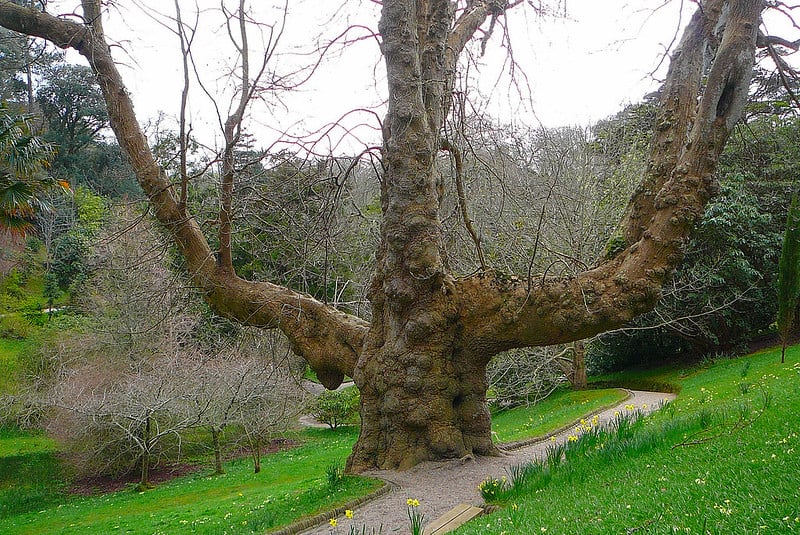
A tree’s health often has a significant impact on its stability. Weather damage, lightning strikes, and tree diseases can all affect a tree’s overall health.
If a tree is damaged, unhealthy, or dead, trimming the tree puts the climber at greater risk. The less stable your tree is, the more precautions will need to be put in place to ensure your tree trimmer’s safety.
Type of Tree
The price to trim trees is greatly influenced by the specific type of tree requiring attention, as different species present varied challenges and requirements. For instance, crepe myrtle trees, which are usually small and manageable, typically cost less to trim.
On the other hand, larger and more robust species such as cypress trees, oak trees, pine trees, and palm trees usually incur higher costs. They are characterized by their towering heights and thicker, more substantial branches, which demand more effort, time, and sometimes specialized equipment to trim properly.
Pests
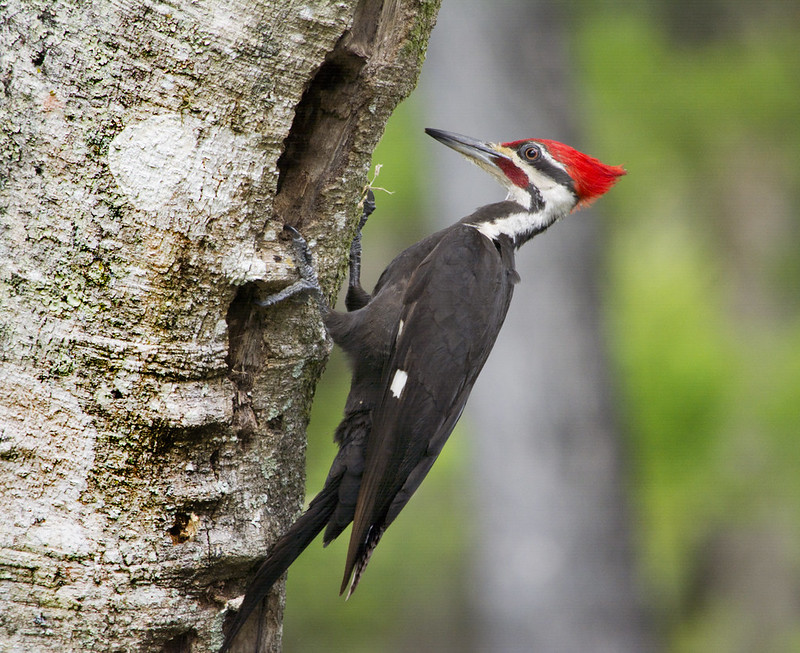
The presence of pests around your tree can influence the cost of a tree trimming job.
Pests like ants or woodpeckers are usually a sign that the tree is rotting on the inside, making it unstable. Pests, such as the emerald ash borer, can also cause significant damage to healthy trees.
If your tree is a home to pests, it may be unstable for a tree trimmer to climb. As a result, the cost to trim an unstable tree will go up before the limbs come down.
Extra Services
Other tree and yard services often included with tree trimming include:
For example, maybe you need trees trimmed and a stump removed to clear the way for a new privacy fence, but what will those additional services cost, and can you save by bundling these projects?
How much will these additional services cost you? We have calculated the average prices for tree removal, stump grinding, and stump removal:
Tree Removal
How much does tree removal cost? On average, homeowners across the U.S. pay between $385 to $1,070 for professional tree removal, with most paying $630 on average. Removing a small tree can cost as low as $150, while a large tree removal project can cost as much as $1,935.
Why you may need to remove a tree:
- Your tree is diseased or ridden with pests. An arborist may recommend a disease or pest control treatment to save the tree, but if this fails, he or she may suggest removing the tree.
- Your tree is a safety hazard. If your tree is too close to your home or power lines, a storm could bring it down on your house. It’s better to remove the tree to reduce the risk of damage.
Stump Grinding
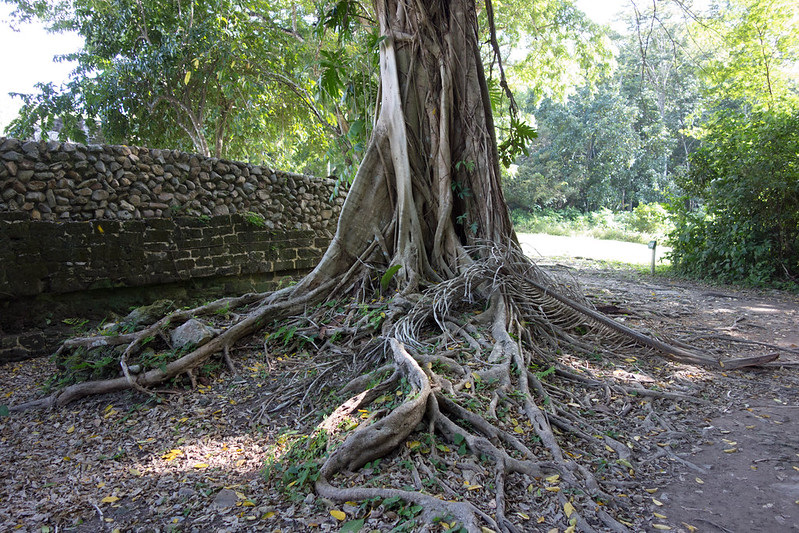
Typical stump grinding prices range between $158 and $450 for the first stump and then $35 to $63 per additional stump after the first.
Why you may want to pay for stump grinding:
- You want to boost your home’s curb appeal. If a stump is visible in your front yard, grinding it down will improve the overall look of your home to family, friends, neighbors, and would-be buyers.
- Your stump is a safety hazard. Your kids love to play in the yard, and an exposed stump can cause your child to trip and fall. Grinding the stump will reduce this risk.
Stump Removal
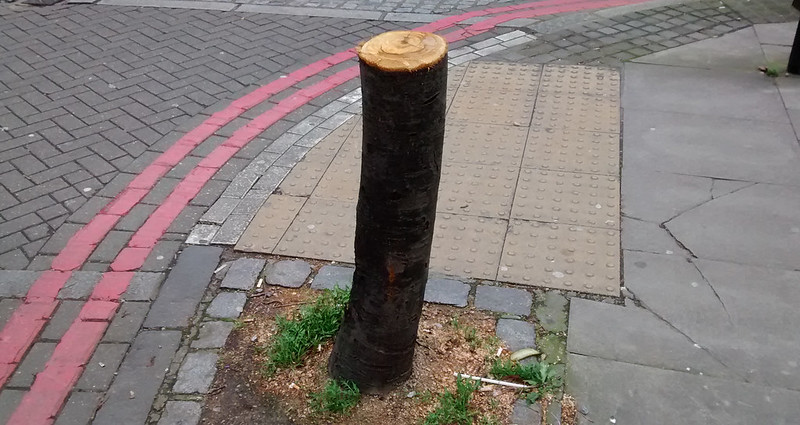
Homeowners pay an average of $326 for professional stump removal. For high-end projects, costs can rise to as much as $1,033. Some low-end projects can cost as little as $77.
Unlike stump grinding, which leaves the stump’s root system intact, stump removal involves pulling the roots out of the earth along with the stump.
Why you may want to have a stump removed:
- Your stump is an obstacle to your landscaping plans: If your stump sits where you want to put a fence, gazebo, or tool shed, you will need it removed.
- The stump’s roots are causing problems. If a chopped-down tree’s remaining root system is damaging your home or its plumbing system, that stump needs to be removed.
DIY Cost vs. Professional Tree Trimming Cost
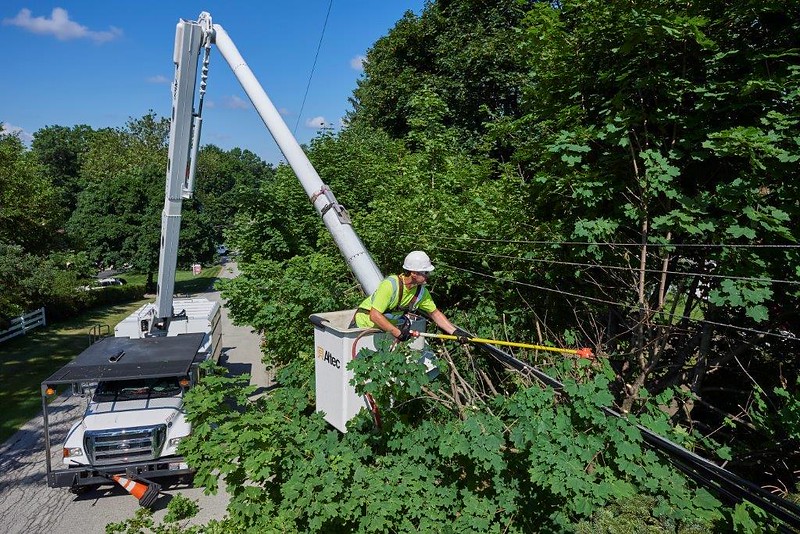
Trimming a tree in your backyard may seem like easy work, but determining how and when to prune an apple tree, for example, is more complicated than it might appear, and undertaking this task without the proper experience and training can prove dangerous, even deadly.
Improper trimming techniques can also affect your tree’s health. Although you may be trying to save a few pennies, you risk causing significant damage to your tree.
If you attempt tree trimming yourself, here are some important safety tips to follow:
- Do not paint or tar the cuts. While you may still see these sealant products sold in stores, using tree pruning sealer is a gardening myth. It’s not good for your tree and should be avoided.
- Never trim trees on a ladder. It’s a life-threatening risk to trim a tree while on a ladder. Put the ladder down and call in a professional to handle the tall branches. Otherwise, secure yourself to the tree using a safety harness and ropes, though keep in mind that hiring a professional is the safest option.
- Don’t cut the branches too short or leave them too long. Doing so may injure your tree.
- Wear a hard hat and safety glasses. You need to protect yourself from falling tree limbs and flying splinters.
- Know how to operate a chainsaw properly. If you do not know how to use a chainsaw safely, you risk maiming or even killing yourself.
- Leave large branches to the professionals. If you are trimming your own trees, leave the larger branches to the professionals to ensure your safety.
- Always work with a buddy. An extra pair of eyes will help increase safety.
Here’s what you’ll need for DIY tree trimming and how much you can expect to pay:
| EQUIPMENT NEEDED FOR DIY TREE TRIMMING | COST |
| Safety Goggles | $13 |
| Work Gloves | $14 |
| Handsaw | $16 |
| Pruning Shears | $17 |
| Arborist Climbing Rope | $17 |
| Hearing Protections | $25 |
| Hard Hat | $28 |
| Loppers | $35 |
| Chainsaw Rental | Full Day $53 |
| Pole Saw Rental | Full Day $56 |
| Harness | $65 |
| Chainsaw Chaps | $71 |
| Wheelbarrow | $90 |
| Steel-toe boots | $100 |
| TOTAL | $600 |
If you haven’t got the required tree trimming equipment sitting in your garage, you can expect to pay up to $600 for DIY tree trimming. Most homeowners pay $475 for professional tree trimming. If you haven’t got the right equipment, hiring a professional is likely the most affordable option.
Remember that small, low-hanging branches are much safer to trim than large or high-hanging branches. If you’re considering using a harness, ropes, or chainsaw, we strongly recommend you hire a professional instead.
The bottom line: Whether or not you have the necessary DIY tree trimming equipment, it’s always best to hire a professional to ensure your safety and the safety of others.
Cost of Tree Trimming Across the U.S.
Across the U.S., homeowners can expect to pay between $315 and $700 for professional tree trimming.
Keep in mind that the costs listed in this pricing guide are all national averages. On a local scale, these prices may vary. Factors like local demand and how tall common trees grow in your area will impact rates.
FAQ About Tree Trimming
1. What is the Difference Between Tree Trimming and Tree Pruning?
You may have seen the terms “trim” and “prune” used interchangeably, but these two tasks mean different things, and hence, the cost to prune a tree might differ from the cost to trim a tree:
- Trimming enhances the appearance and aesthetics of a tree. There is usually no concern for the health of the tree.
- Pruning keeps your plant healthy as opposed to adding aesthetic value. Pruning involves removing certain parts of the tree to promote health and new growth, such as diseased or dead branches.
2. How Often Should Trees Be Trimmed?
Most mature trees need trimming every three to five years. Young trees need trimming every two to three years.
On the other hand, fruit trees need annual trimming, while most evergreen trees can go years without a trim.
To ensure the health and beauty of your trees, talk to an arborist about developing an optimal trimming and pruning routine for your trees.
3. Do I Need to Hire a Certified Arborist for Tree Trimming?
For tree trimming, you don’t need to hire an arborist, though we do recommend it.
While many landscaping companies offer basic tree trimming services, an arborist is trained to maintain a tree’s long-term health. When it comes to caring for one of your landscape’s most important plants, it’s a good idea to call up an expert in the field.
When it comes to tree removal, hiring a professional arborist is always recommended. Tree removal is a dangerous task and should always be performed by a certified arborist.
4. How Much Does it Cost to Trim a Large Tree?
The average price to trim a tree that is over 60 feet tall ranges between $233 and $1,267. However, this is a broad estimate, and actual costs can vary due to several influencing factors, such as the type of tree and where it is located.
Final Thoughts
It’s always best to hire a professional tree trimmer, especially for those larger branches. Trimming a tree may look easy, but it’s a dangerous task to carry out without the proper training. To ensure your safety, call a local lanscape professional near you who can take the loppers off your hands.
Remember, the average cost to trim a tree is around $475, with most homeowners seeing prices ranging from $315 to $700. These prices will vary depending on where you live, your tree’s size, and the job’s difficulty.
Some homeowners may pay as low as $85 for a small tree trimming job, while others may be closer to $1,267 for a high-end trimming project.
Main Photo Credit: Bart Lumber / Flickr / public domain